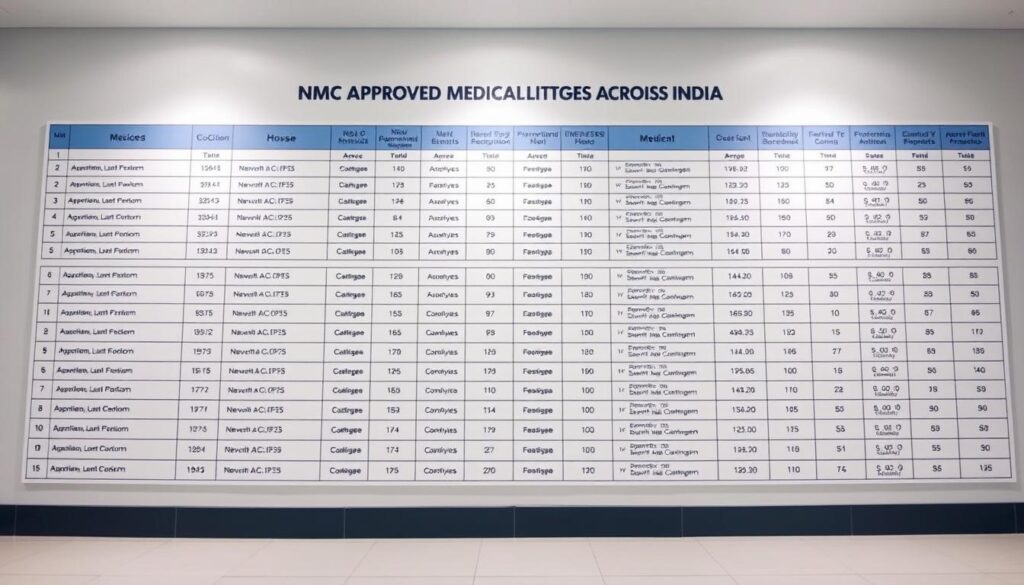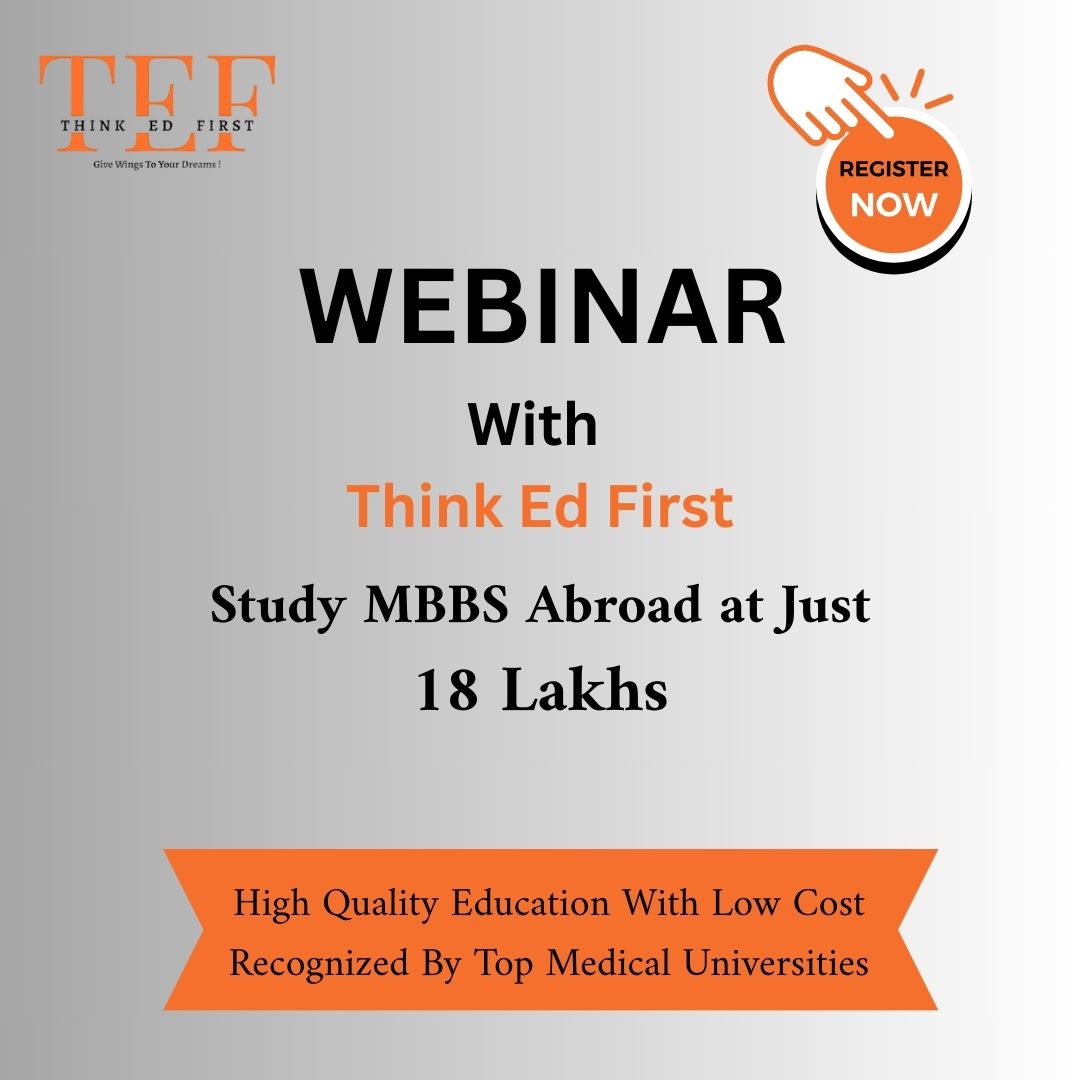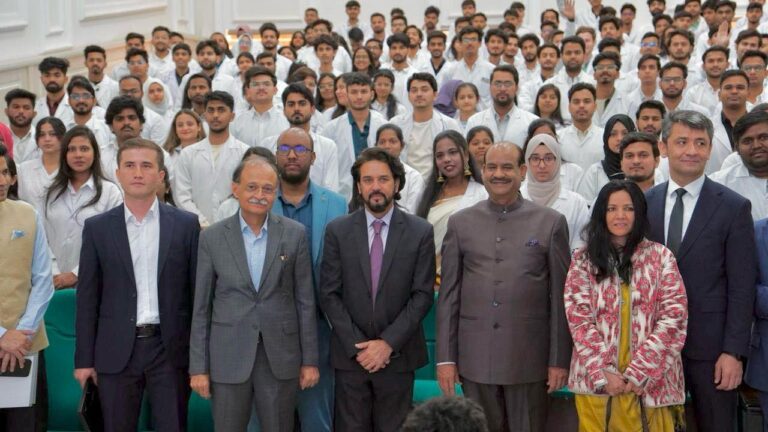Have you ever wondered what makes a medical degree truly credible? With so many institutions offering courses, how can students ensure their education will be recognized globally?
In India, the National Medical Commission (NMC) has replaced the Medical Council of India (MCI) as the regulatory body. This change ensures updated standards and better quality in medical education. However, attending a non-recognized institution can lead to invalid degrees and licensing issues.
For students, verifying NMC approval is crucial. It not only guarantees the credibility of their education but also opens doors to global opportunities. In the following sections, we’ll guide you through the process of checking if a college is recognized by the NMC.
Why Attending an NMC Approved Medical College Matters
The foundation of a successful medical career starts with the right education. Attending a recognized institution ensures your degree is valued globally and opens doors to countless opportunities. Let’s explore why this matters.
Recognition and Career Opportunities
Degrees from recognized institutions are accepted worldwide. Organizations like WHO, FAIMER, and USMLE acknowledge these qualifications. This recognition allows graduates to practice medicine in India and abroad.
For example, Samarkand State Medical University is recognized by both the National Medical Commission and WHO. This ensures its graduates meet global standards. You can learn more about its programs here.
Quality of Education and Infrastructure
Recognized institutions maintain high standards. They follow WHO-prescribed curricula and have advanced facilities like simulation labs and virtual dissection tables. These tools enhance learning and prepare students for real-world challenges.
For instance, AIIMS Delhi boasts ₹1,200 crore research facilities. Such investments ensure students receive top-notch education and training.
| Feature | Details |
|---|---|
| Student-Faculty Ratio | 10:1 |
| Hospital Beds | 300+ per institution |
| Facilities | Simulation labs, cadaver facilities, digital learning tools |
| Inspections | Annual checks to ensure infrastructure maintenance |
Choosing a recognized institution ensures you receive quality education and training. It’s a step toward a successful and fulfilling medical career.
Understanding the National Medical Commission (NMC)
Understanding the regulatory body overseeing medical education is essential for aspiring doctors. The National Medical Commission (NMC) replaced the Medical Council of India (MCI) in September 2020. This transition aimed to modernize and improve the standards of medical education in India.
Role of NMC in Medical Education
The NMC plays a crucial role in ensuring quality education for future healthcare professionals. It oversees the curriculum, infrastructure, and faculty standards across institutions. One of its key initiatives is the introduction of the National Exit Test (NEXT), a single licensing exam for MBBS graduates.
Additionally, the NMC focuses on skill-based assessments rather than theoretical knowledge. This approach prepares students for real-world medical challenges. The commission also implements programs like the District Residency Program to improve rural healthcare services.
Difference Between MCI and NMC
The transition from MCI to NMC brought significant changes. The NMC eliminated the annual renewal system for permanent recognition, reducing administrative burdens. It also introduced a ranking system for institutions based on student performance in NEXT.
Here’s a quick comparison of the two bodies:
| Aspect | MCI | NMC |
|---|---|---|
| Recognition Renewal | Annual renewal required | Permanent recognition |
| Licensing Exam | Separate exams for licensing and PG | Single exam (NEXT) for both |
| Focus | Theoretical knowledge | Skill-based assessment |
| Rural Healthcare | Limited focus | District Residency Program |
For more details on how these changes impact students abroad, check out the NMC guidelines for MBBS abroad.
How to Check if a Medical College is NMC Approved
Ensuring the credibility of your education is a critical step for aspiring doctors. With 34% of students falling for fake approval certificates annually, it’s essential to verify the recognition status of your chosen institution. Here’s how you can do it effectively.
Step-by-Step Verification Process
Start by visiting the official NMC website. Look for the directory of recognized institutions. This list is updated regularly and includes all colleges that meet the required standards.
Next, cross-check the college’s name with the State Medical Councils’ approved lists. This ensures the institution is recognized at both national and state levels. Avoid relying solely on provisional approvals, as they may not guarantee permanent recognition.
Finally, confirm the college’s status with the NMC’s official helpline or email support. This step eliminates any doubts and ensures you’re making an informed decision.
Common Pitfalls to Avoid
Be cautious of scams involving forged documents. For example, the 2022 Punjab college scam highlighted how fake certificates can mislead students. Always verify the authenticity of approval documents directly with the NMC.
Here are some additional tips to avoid common mistakes:
- Beware of institutions offering “provisional approval” without permanent recognition.
- Verify the college’s infrastructure and faculty standards before enrolling.
- Cross-reference multiple sources, including the NMC website and State Medical Councils.
By following these steps and avoiding pitfalls, you can ensure your education is recognized and valued globally.
Top NMC Approved Medical Colleges in India
India is home to some of the most prestigious institutions for aspiring doctors. These institutions offer world-class education, advanced infrastructure, and global recognition. Whether you choose a government or private institution, it’s essential to understand the key differences and benefits.
Government Medical Colleges
Government institutions are known for their affordability and high-quality education. For example, All India Institute of Medical Sciences (AIIMS) Delhi ranks first in the NIRF 2024 list with an annual intake of 132 students. Similarly, Jawaharlal Institute of Post Graduate Medical Education and Research (JIPMER) in Puducherry offers 200 seats annually.
These institutions focus on research and skill development. They also implement mandatory EWS quotas, ensuring equal opportunities for all students. However, securing admission can be highly competitive due to limited seats.
Private Medical Colleges
Private institutions like Christian Medical College (CMC) Vellore and Kasturba Medical College, Manipal, are renowned for their advanced facilities and industry partnerships. CMC Vellore offers 100 seats annually, while Kasturba Medical College provides 250 seats.
These colleges often have higher fees, ranging from ₹15-25 lakhs annually. However, they invest heavily in infrastructure upgrades and skill labs. For instance, SRM Chennai recently upgraded its facilities to meet global standards.
| Institution | Type | Seats | Annual Fees |
|---|---|---|---|
| AIIMS Delhi | Government | 132 | ₹10,000 |
| CMC Vellore | Private | 100 | ₹20 lakhs |
| Kasturba Medical College | Private | 250 | ₹25 lakhs |
| JIPMER Puducherry | Government | 200 | ₹12,000 |
Here are some key points to consider when choosing an institution:
- Fee structures vary significantly between government and private colleges.
- Mandatory EWS quotas can impact admission chances in government institutions.
- Industry partnerships, like Apollo-JIPMER skill labs, enhance practical training.
- Recent infrastructure upgrades in private colleges ensure modern learning environments.
Choosing the right institution is a critical step toward a successful medical career. Whether you opt for a government or private college, ensure it aligns with your goals and aspirations.
NMC Approved Medical Colleges Abroad
Exploring global opportunities in the field of medicine can open doors to diverse learning experiences. Many institutions abroad are recognized by the National Medical Commission, offering quality education and unique specializations. Here’s a closer look at some popular destinations for Indian students.
China
China is home to several institutions offering programs in school medicine. Universities like Peking Union Medical College provide advanced facilities and research opportunities. The curriculum often integrates USMLE preparation, helping students prepare for global licensing exams.
Russia
Russia boasts institutions like Lomonosov Moscow State University, known for its advanced research facilities. Programs here focus on practical training and tropical medicine, making them ideal for students aiming for diverse career paths.
Ukraine
Institutions like Bogomolets National Medical University offer state-of-the-art infrastructure and English-medium programs. The curriculum emphasizes skill-based learning, ensuring students are well-prepared for real-world challenges.
Kyrgyzstan
Kyrgyzstan provides affordable education with scholarships covering tuition and stipends. Universities like Kyrgyz Russian Slavic University focus on integrating NMAT exam preparation into their programs.
Bangladesh
Bangladesh offers quality education at lower costs. Institutions like the University of Dhaka are recognized by the NMC and provide specialized programs in medical sciences.
Philippines
The Philippines is known for its US-based curriculum and high FMGE pass rates. Universities like the University of Perpetual Help offer tropical medicine specialization options, catering to diverse student interests.
Choosing the right institution abroad ensures a strong foundation for your career in medicine. Always verify the recognition status and curriculum details to make an informed decision.
Key Features of NMC Recognized Medical Colleges
What sets apart a recognized institution in the field of health sciences? These institutions are designed to provide a comprehensive learning experience, combining advanced facilities with innovative training methods. Let’s explore the features that make them stand out.
Recognized institutions ensure students have access to state-of-the-art infrastructure. This includes mandatory 10-bed ICUs, 30 delivery rooms, and 24/7 emergency services. Such facilities prepare students for real-world challenges in medical education.
Here are some additional features that enhance the learning experience:
- Telemedicine training modules to prepare students for digital healthcare.
- AI-powered anatomy visualization tools for interactive learning.
- Community health outreach programs to promote practical experience.
- Mental health support systems to ensure student well-being.
- Green campus initiatives in newly approved institutions.
These features not only enhance the quality of education but also ensure students are well-prepared for their careers. Choosing a recognized institution is a step toward a successful future in health sciences.
NMC Guidelines for MBBS Colleges
Institutions offering medical education must adhere to strict guidelines to ensure their programs meet global standards. These guidelines cover infrastructure, faculty qualifications, and curriculum design, ensuring students receive quality training in health sciences.
Infrastructure Requirements
For institutions offering MBBS programs, infrastructure plays a vital role. Each college must have at least 330 beds, 600 daily OPD patients, and a 198-bed occupancy rate. These facilities ensure students gain hands-on experience in real-world scenarios.
Additionally, institutions must provide advanced tools like simulation labs and telemedicine modules. These resources prepare students for modern healthcare challenges and enhance their practical skills.
Faculty and Curriculum Standards
Faculty qualifications are equally important. At least 25% of clinical department faculty must hold PhDs. This ensures students learn from experienced professionals with deep expertise in their fields.
The curriculum must align with global standards, incorporating skill-based assessments like the OSCE exam pattern. Reforms in the Competency-Based Medical Education (CBME) system also aim to address implementation challenges, ensuring students are well-prepared for their careers.
Here are some key features of the curriculum:
- CBME implementation to focus on practical skills.
- OSCE exam reforms for better assessment of clinical abilities.
- Rural posting credit system to promote community health experience.
By meeting these guidelines, institutions ensure their programs are recognized globally, providing students with a strong foundation in health sciences.
Benefits of Studying in NMC Approved Medical Colleges
Choosing the right institution can shape your entire career in the health sciences. Recognized institutions offer numerous advantages, from global recognition to practical training opportunities. Let’s explore the key benefits of studying in these colleges.
One of the most significant advantages is the high internship placement rate. Recognized institutions boast a 92% placement rate, compared to just 41% in others. This ensures students gain hands-on experience, preparing them for real-world challenges.
Another benefit is the opportunity for credit transfer agreements with foreign universities. This allows students to continue their education abroad seamlessly. Additionally, research publication opportunities are abundant, helping students build a strong academic profile.
Alumni networks in recognized institutions are another advantage. These networks provide mentorship, job referrals, and industry connections. They play a crucial role in shaping students’ careers and opening doors to global opportunities.
Finally, recognized institutions integrate PG entrance preparation into their curriculum. This ensures students are well-prepared for competitive exams, giving them an edge in their careers.
| Benefit | Recognized Institutions | Others |
|---|---|---|
| Internship Placement Rate | 92% | 41% |
| Credit Transfer Agreements | Available | Limited |
| Research Opportunities | Abundant | Limited |
| Alumni Network | Strong | Weak |
Studying in a recognized institution ensures a strong foundation for your career. It provides global recognition, practical training, and opportunities for growth. Make an informed choice to shape your future in the health sciences.
Challenges Faced by Students in Non-NMC Colleges
Navigating the challenges of non-recognized institutions can be overwhelming for students. These institutions often lack the necessary infrastructure and resources, leading to significant hurdles in education and career preparation.
One major issue is the need for bridge courses. A staggering 78% of graduates from non-recognized institutions require additional training to pass the FMGE exam. This not only delays their careers but also adds to their financial burden.
Language barriers are another common problem, especially in CIS countries. Many students struggle with courses taught in local languages, which can hinder their understanding and performance.
Hidden fee structures are also a concern. Non-recognized institutions often impose unexpected costs, leaving students in financial distress. Additionally, many of these colleges use outdated equipment, limiting practical training opportunities.
A case study from Ukraine highlights the issue of degree recognition delays. Many students faced prolonged waiting periods to have their degrees validated, impacting their career progression.
- Language barriers in CIS countries
- Hidden fee structures
- Obsolete equipment in private colleges
- Degree recognition delays, as seen in Ukraine
These challenges underscore the importance of choosing a recognized institution. It ensures a smoother educational journey and better career prospects for students.
Frequently Updated List of NMC Approved Medical Colleges
Staying updated with the latest information on recognized institutions is crucial for aspiring doctors. The National Medical Commission (NMC) ensures transparency by publishing quarterly updates on its COAP portal. This portal serves as a reliable resource for students to verify the status of their chosen institutions.

Here are some key features of the COAP portal that make it user-friendly and efficient:
- SMS Alert Subscription: Students can subscribe to receive instant updates via SMS, ensuring they never miss important announcements.
- State-wise PDF Downloads: The portal allows users to download state-specific lists in PDF format, making it easier to filter information.
- Historical Data Archive: Records dating back to 2010 are available, providing a comprehensive view of recognition trends over the years.
- Verification Code Authentication: Each institution’s status can be verified using a unique code, ensuring authenticity and reducing the risk of misinformation.
With these tools, students can make informed decisions about their education. The COAP portal is designed to simplify the verification process, ensuring transparency and reliability in the field of health sciences.
Conclusion
Choosing the right path in education is crucial for a successful career. We’ve outlined the steps to verify institutions, ensuring your degree holds value globally. Always cross-check with official sources to avoid unrecognized programs.
Future trends like digital twin campuses are transforming learning. These innovations enhance practical training and prepare students for modern healthcare challenges. Staying updated with such advancements can give you an edge.
For personalized guidance, consider reaching out to experts. They can help you navigate the admission process and choose the best-fit institution. This support ensures you make informed decisions.
Finally, avoid unrecognized institutions. They can lead to invalid degrees and career setbacks. By following the verification process, you secure a credible education and a bright future in the field of health sciences.





